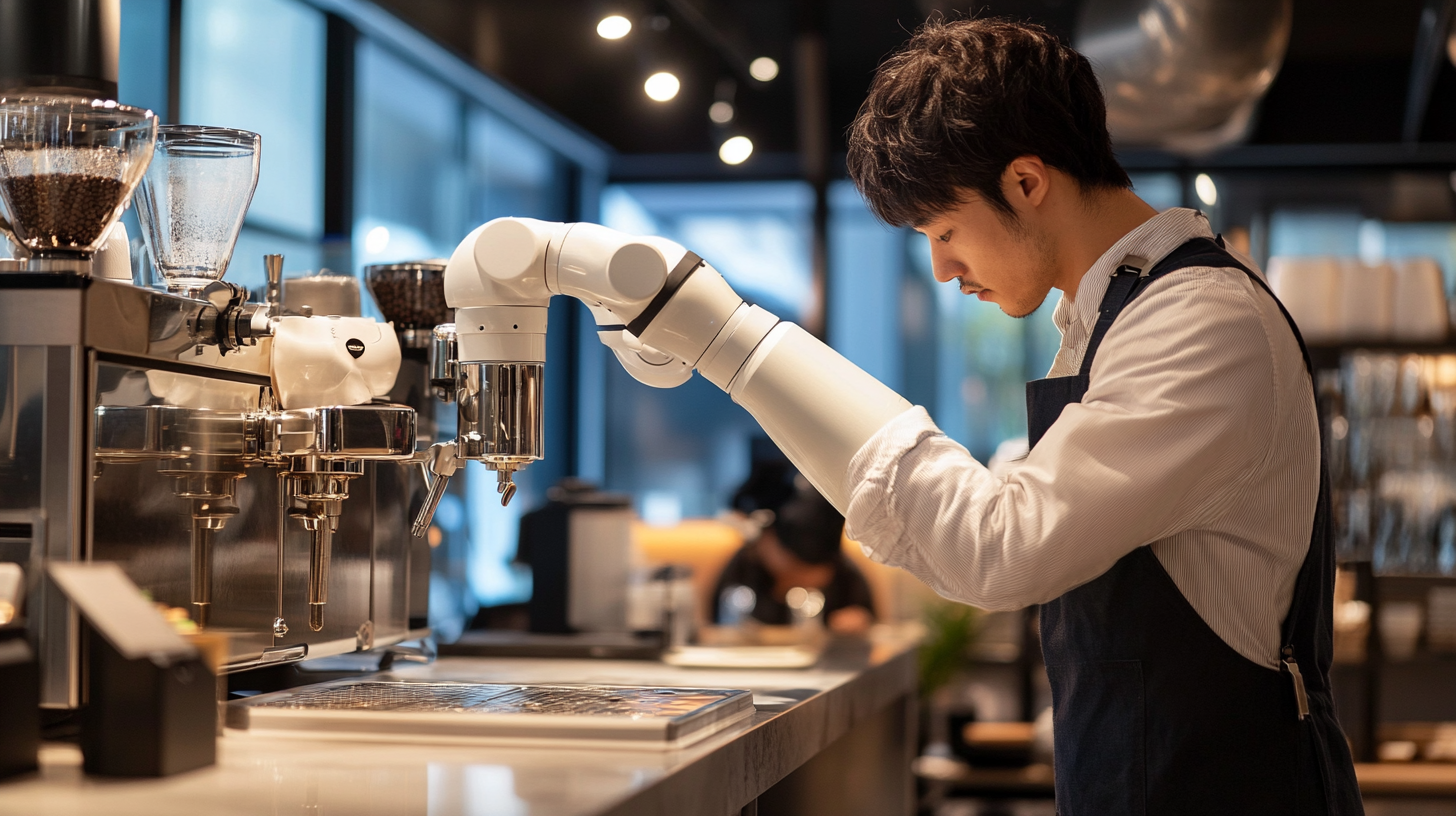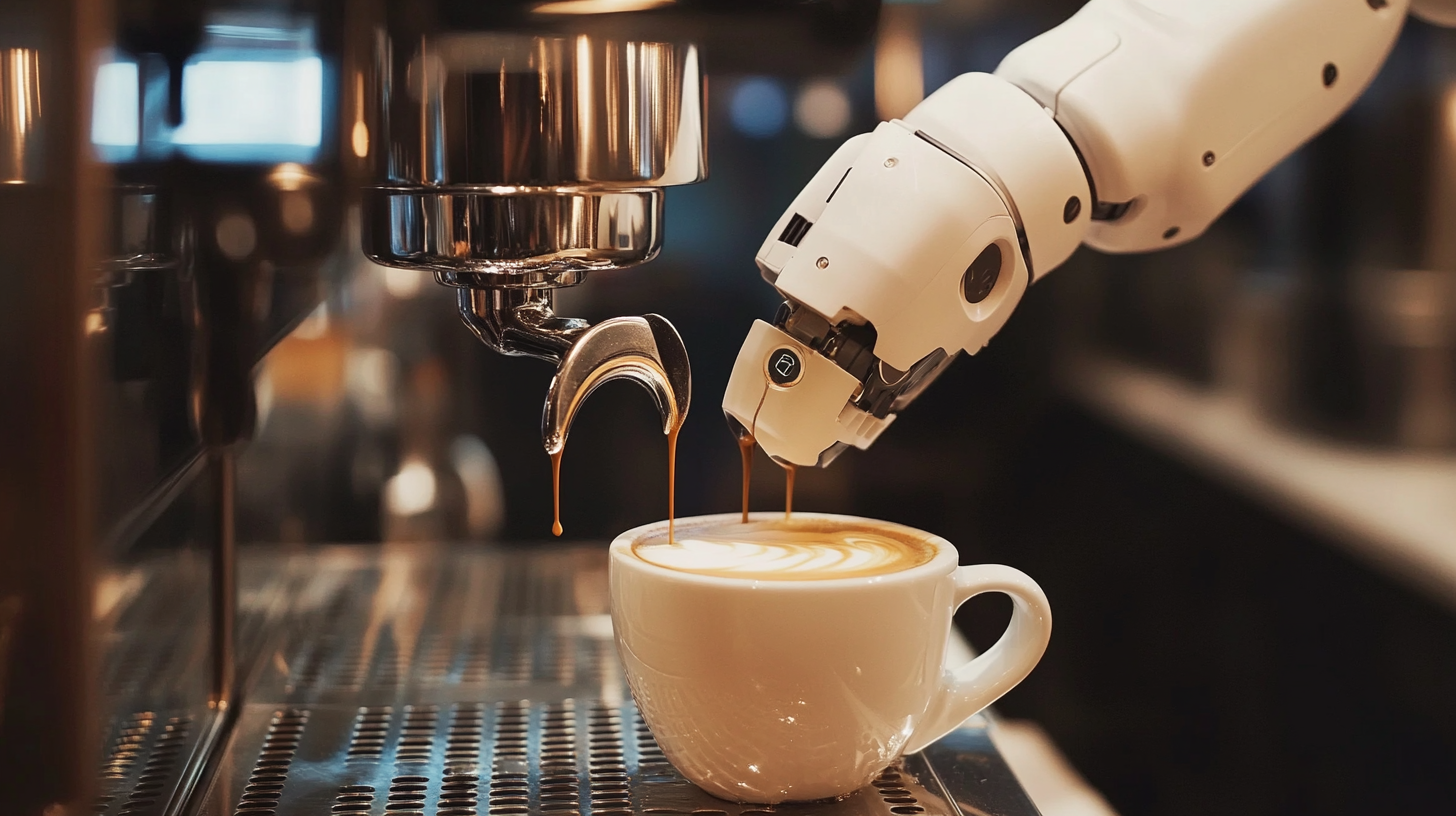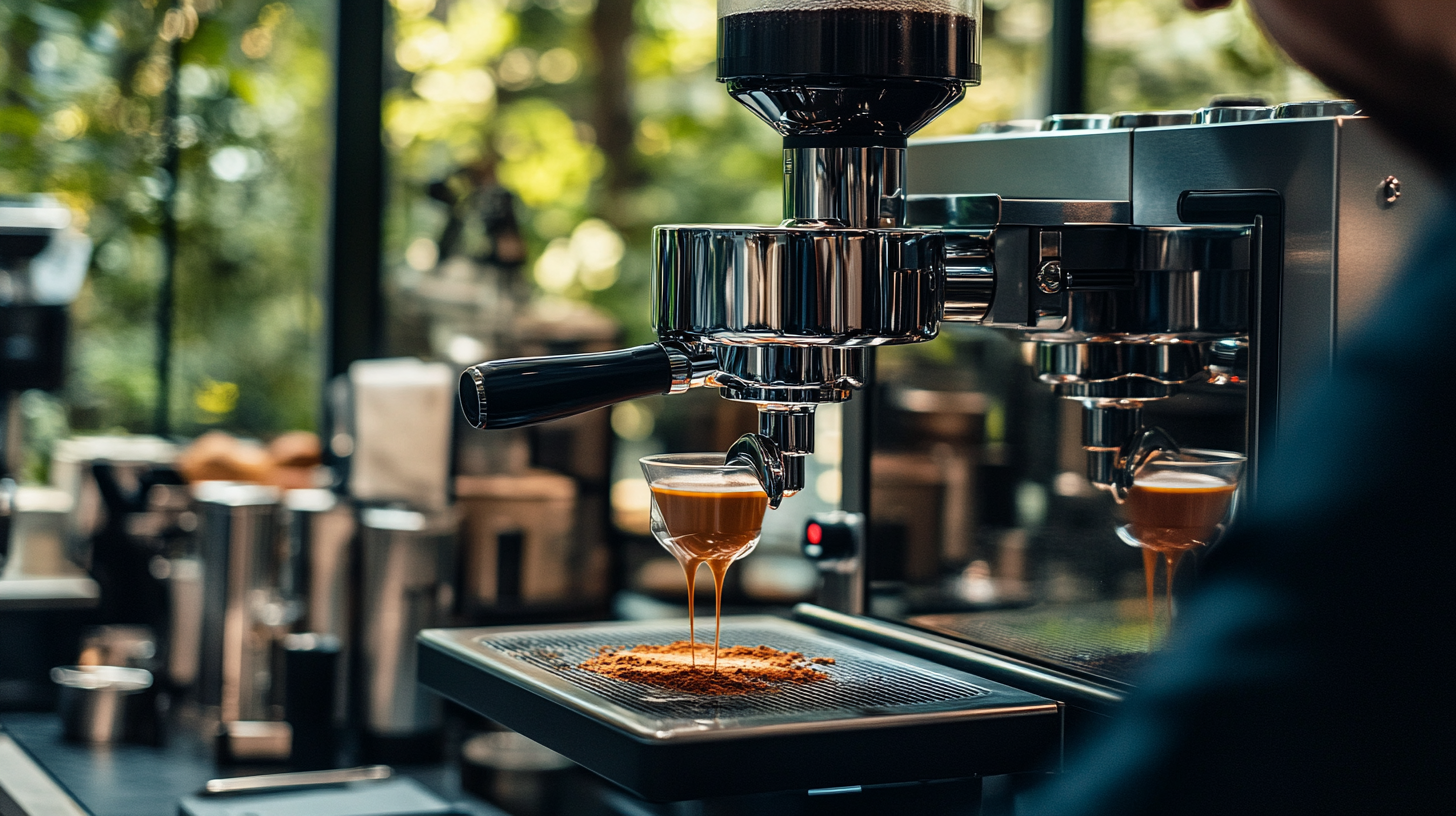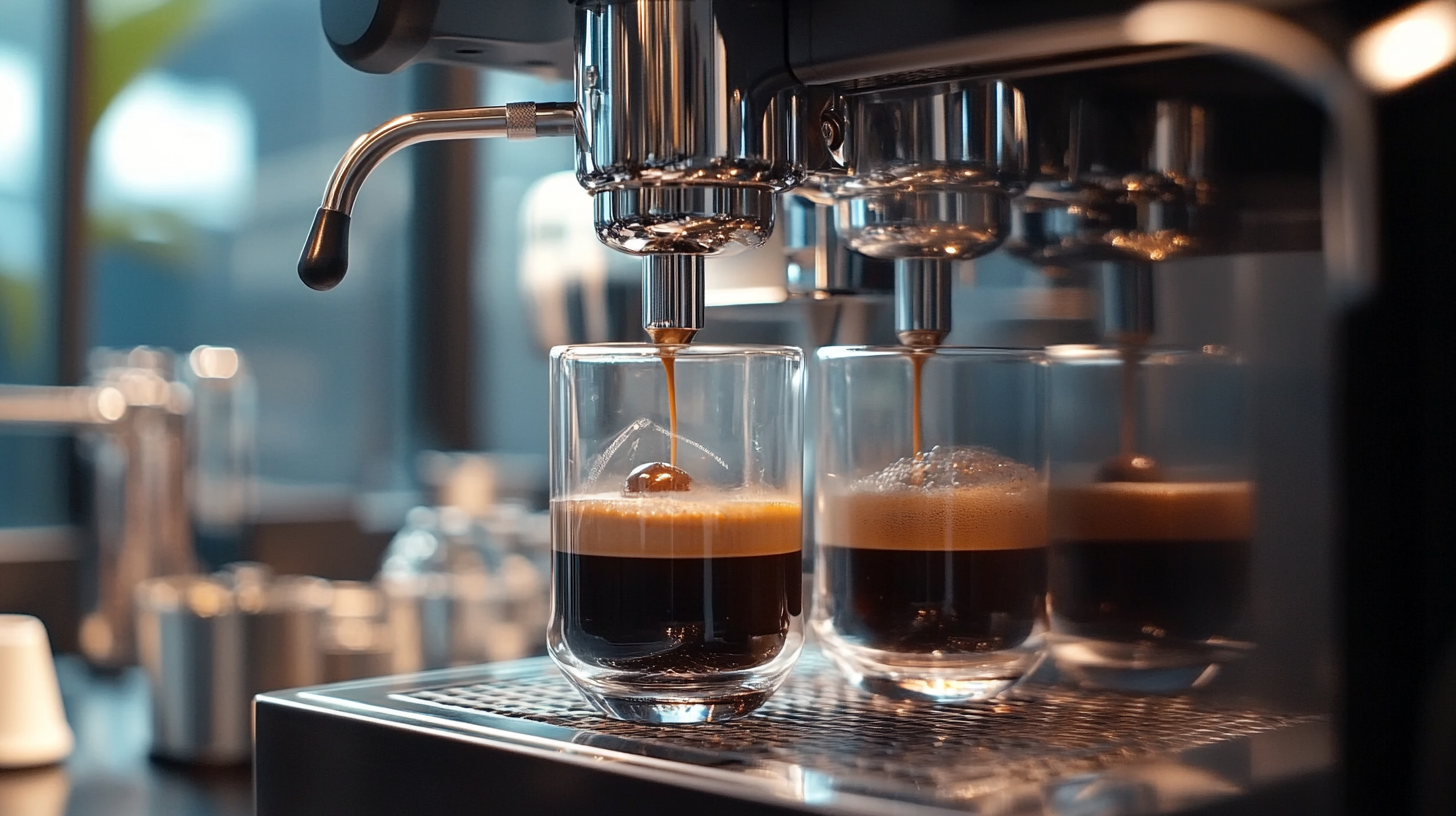The recent changes seen in the coffee industry have been quite terrific, primarily with the modernization and automation techniques that are now taking place. With the robot coffee barista, people are seeing significant change between the two extremes; it's not at all art and science anymore - it's both. According to the report published by MarketsandMarkets, the global coffee shop market will reach USD 450 billion by 2025, highlighting the scope of the ever-increasing trend in the coffee industry focusing on innovations. As more and more bytes of people become adventurous in tasting a wide variety of quality coffees, the demand for automating consistency is also gearing up.
This Robot Coffee Barista has been playing a major role in satisfying the transforming needs of consumers. Automating hybrid personalization along using artificial intelligence with smart brewing technologies, allows these robots not only to provide a supreme level of operational efficiency but also seek to enhance service delivery. "According to the research report of Grand View," this is also underpinned since the robotics market in food and beverage assigned the growth potential of 13.8% CAGR from 2021 to 2028 globally. More importantly, this signifies the knowledge that will carry with the specification of every technical aspect related to Robot Coffee Barista, as it seems like globally buyers are bringing these cutting-edge machines as investments to remain in the race.

Not only have the Robot Coffee Baristas brought sophistication and convenience in brewing coffee but they also have something that--replicating the mettle of a barista--guarantees every cup of coffee being brewed to perfection. Advanced sensors and AI technology enable the machine to customize brews according to individual preferences by assessing control variables such as grind size, water temperature, and extraction time, thereby allowing wide-ranging coffee styles, from espresso to latte, with consistent quality. And now, the brewing Robot Coffee Barista goes further; so easy to use, an ordinary person can easily customize coffee through the user-friendly touch-screen interface and application. Easy for the tech-savvy and equally simple for the not-so-tech-savvy. Maintenance was also made easy; a self-cleaning robot feature made everything cleaner with less human effort, keeping the machine hygienic and ready to use. Lastly, the Robot Coffee Barista turns more heads than the rest in terms of aesthetics. Its cutting-edge futuristic design dovetails any coffee shop or kitchen atmosphere; it's not only a machine but complements the space very well. Combines advanced technology with user-friendly features and equally alluring design, this is set to change the way coffee drinkers drink their favorite brews forever.

At some point in history, robot baristas began invading, transforming the espresso world. For instance, the report by Research and Markets forecasts that the global market for robotic coffee machines will place an appreciable annual increment of over 20.4% till the year 2026. The opened new sales opportunity all signal a rising demand for automated coffee solutions, calling for a deeper understanding of technological innovations at play.
Innovation that includes the likes of artificial intelligence, machine learning, or precision brewing techniques has really transformed the coffee experience in all parts of the world. Intelligent algorithms enable robot baristas to adapt their drinks to each person's individual preferences, so every order has the consistent quality associated with great experiences-without exception. Defined by temperature control with consistent grind to enhance flavor extraction, precision brewing delivers a superior taste profile that would compete with the traditional ways of making coffee-Journal of Food Engineering finds.
On the other hand, state-of-the-art user interface designs have made these machines even more accessible. Through an easy touch-screen interface or an application integrated into your mobile phone, a customer can place an order and continue making distances to where technology will ever meet user experience. Statista reports that by the year 2025, the cafe market will be worth about $45.4 billion, indicating the investment opportunities ahead.
Indeed, in the same breath each time we look into developing these technologies, it is clear that this robot coffee barista is not just an innovation, but truly the next frontier for retail in coffee. Letting these paradises tap into such advances can increase efficiencies in their operations while at the same time delivering to the ever-increasing demands of high-tech, personalized coffee experiences from customers.

Robotic coffee baristas are shaking up the coffee industry in a new way that leaves behind the traditional barista model. The worldwide coffee machine market is expected to reach $22 billion by the year 2025, according to a market analysis report published by ResearchAndMarkets. Automated machines would be one of the major factors contributing to this figure. Robotic baristas not only fulfill an increasing high demand for quality coffee but also fill labor shortages that affect many cafes and restaurants.
Robots baristas or traditional baristas - there is a big difference in many aspects. First, an essential parameter is a consistency; research by the Specialty Coffee Association indicates that robotic systems may provide uniformity in quality and flavor extraction and thus drastically reducing human error. Robots such as the popular Cafe X have precise algorithms for brewing; each cup must taste the same flavor profile.
The difference also lies in the operational cost between the two. It is stated in the report by Allied Market Research that although the investments in robotic systems tend to be comparatively exorbitant, the long-term returns are possible. They would save on labor, reduce the wastage, since ingredient use is precise, and can operate round-the-clock. Compared to traditional baristas, who represent a significant investment in labor for most businesses, have working hours limitations. The way of coffee preparations and consumption is drastically going to change if robotic coffee baristas come into existence as people from around the world are increasingly loving efficiency and quality.

Investing a robotic coffee barista within a business model invariably raises consideration of cost and return on investment (ROI) among international customers. When considering investing in such futuristic technology, the enormity of initial investment is an important aspect, which varies according to specifications, brand, and customizations, among others. In addition, considering the long-term saving of such robots, it should extend beyond the first on-boarding costs. With the continuous operation and the assurance that same quality will come out from the beverage, those two reasons can accrue great savings from the labor force and minimize human errors.
Another contribution brought about by robotic coffee baristas is the quality of service enjoyed by high-class customers. This is indicated by the reduced service delivery time, which, together with the novelty of having a robot serve one's drinks, brings in hordes of clients that would not have come previously just for curiosity's sake. To some businesses located in highly populated areas, they register massive improvements in their coffers. Having a robotic barista thus becomes an appealing marketing strategy that most global consumers use as they turn their attention to automation and convenience against the competition.
Studies have shown that ROI can be computed after a specific period, usually between three to five years. Global buyers now can determine the economic viability of investing in robot coffee baristas by calculating the anticipated revenue boost with the cost-saving measures. Such a holistic view allows decision-makers to opt for informed decisions that benefit their business objectives while positioning the firm as competitive in an ever-evolving marketplace.
Creating the sky in artificial intelligent robots are reformed and building an automatic environment, such as coffee making, among others. This robot coffee barista with superior technical specification is soliciting interests from prospective buyers all over the world and, maintenance and support being the best for optimal performance, is much found worthy. Regular maintenance has to be done to keep the very efficient life of these robots, which works mightily at all hours to meet the growing consumer demand.
Such aspects as the establishment of HS series hybrid motion robots by Borkent Robotics are significant in regard to a broader industry push towards developing robots better suited for the task. It confirms that these robots will not mainly be useful for multipurpose functions, but it also talks about the breakthrough in performance that they exhibit. According to the International Federation of Robotics report, service robots are expected to generate a worldwide commercial turnover of USD 120 billion by 2025, setting an obvious trend showing growing demand for such intelligent machines at work and at home.
For buyers of Robot Coffee Barist, knowledge about maintenance protocols and the availability of timely and reliable support services would be critical. Important in the definition of optimal performance is regular updating of the software, routine checks, and little hassle in troubleshooting. Besides, as technology advances within the industry, updated and new developments must form part of the features that enhance both efficiency and customer satisfaction. This trend highlights why buyers must pragmatically optimize their maintenance schemes to maximize the productivity capability of their robotic barista systems.